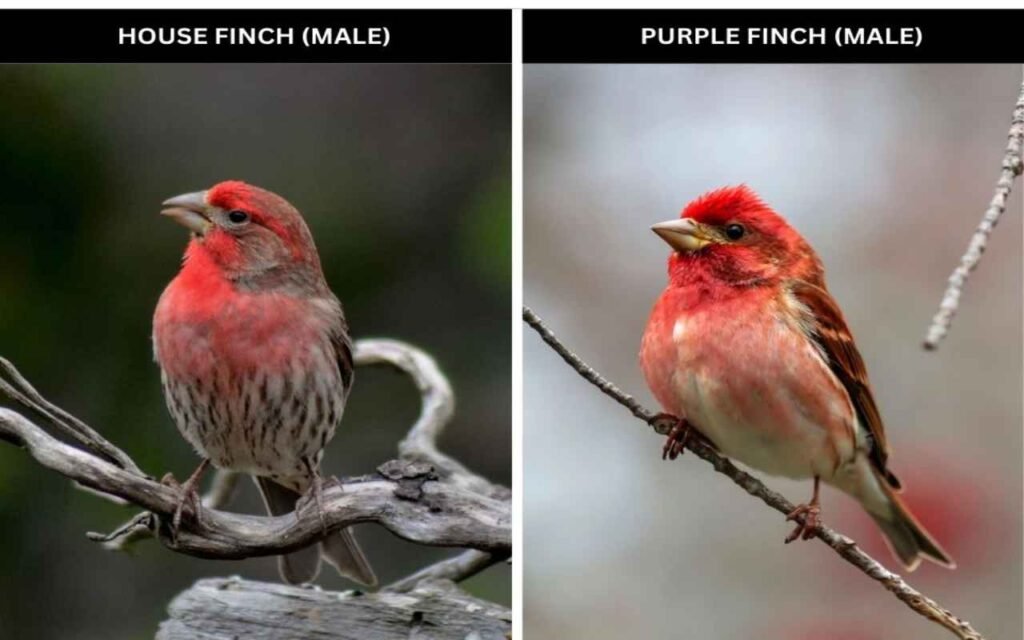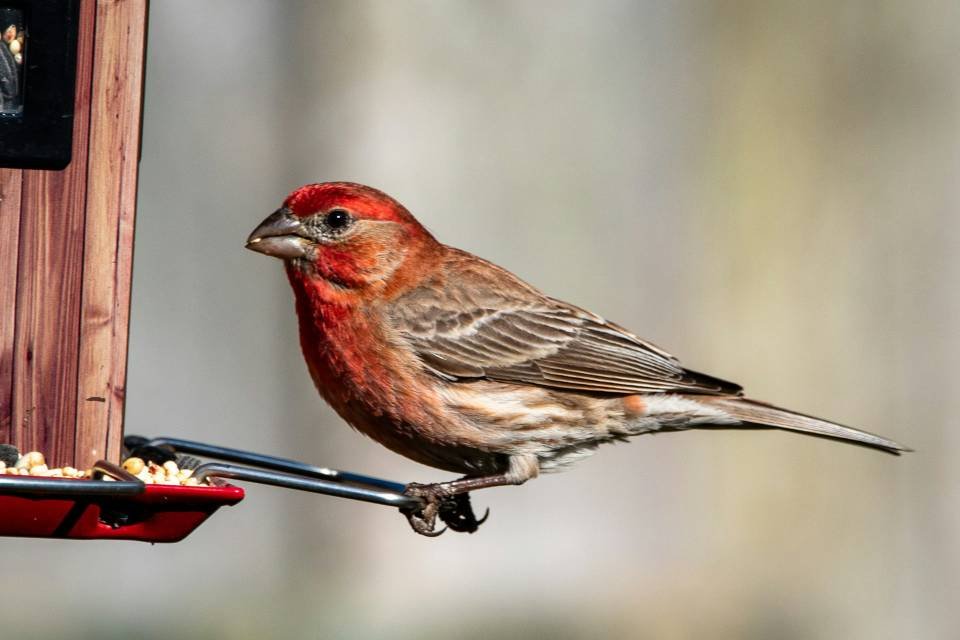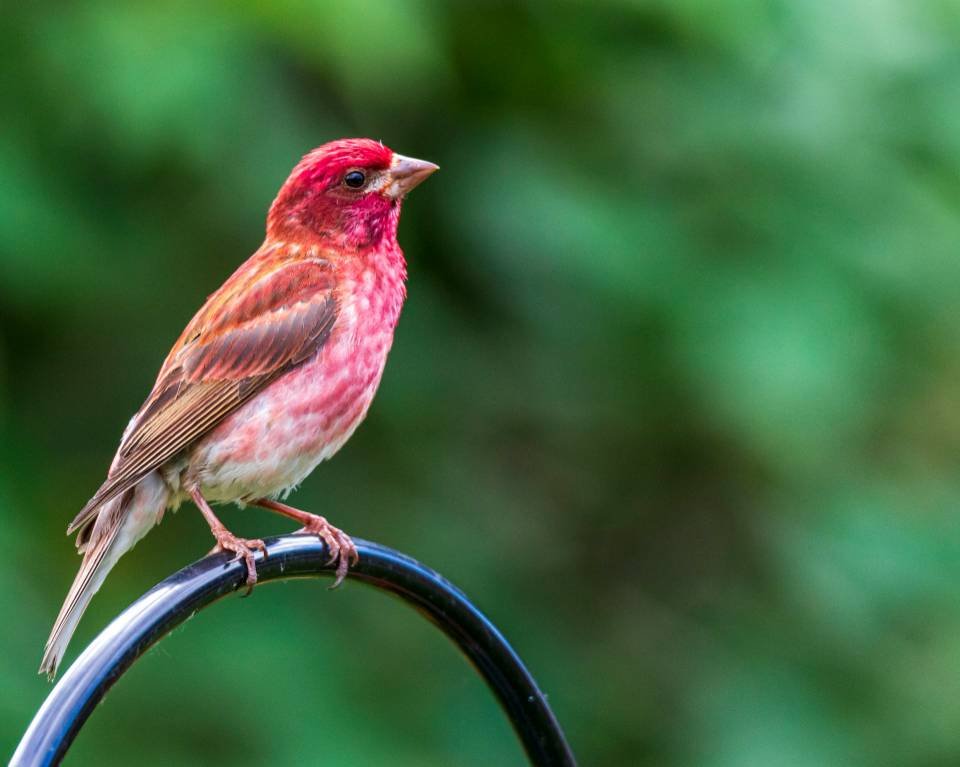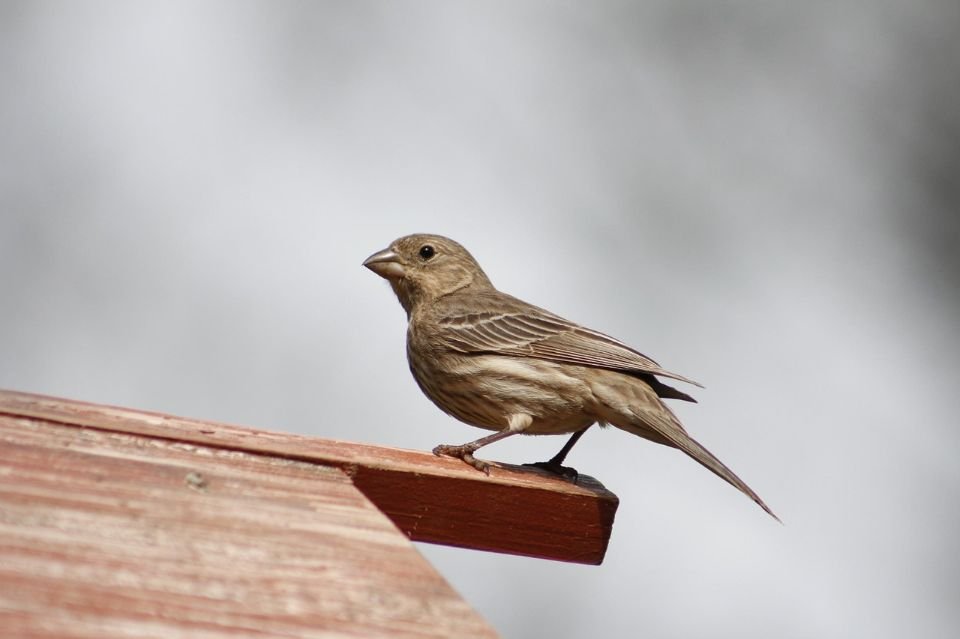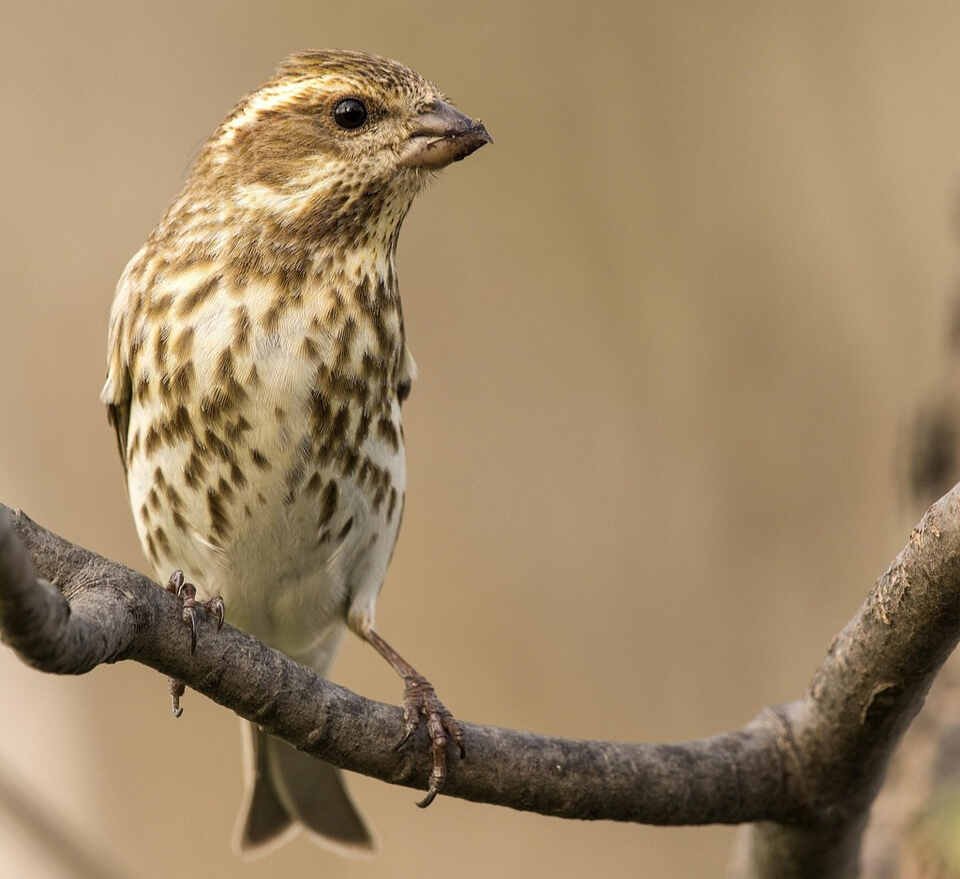So, you’ve spotted a little red bird flitting around your backyard feeder and thought, “Sweet, a finch!” 😅 But then it hits you, wait, is this a House Finch or a Purple Finch? Don’t worry, you’re not alone. These two look deceptively similar, and even seasoned birders can mix them up sometimes.
I’ve spent countless mornings squinting at backyard visitors, trying to figure out who’s who, so let’s break it down together. By the end of this guide, you’ll be confidently calling out your finches without hesitation.
Understanding the Basics: House Finch vs Purple Finch
Before we get into the nitty-gritty of plumage and song, let’s set the stage. House Finches and Purple Finches both belong to the finch family, but they have subtle differences that matter if you want to ID them correctly.
- House Finch (Haemorhous mexicanus): Originally from the western U.S., these birds have spread coast-to-coast thanks to human activity. They love feeders and urban areas.
- Purple Finch (Haemorhous purpureus): Native to the eastern and northern U.S., these guys prefer forests and wooded areas. They’re a little shyer at feeders.
FYI, this guide will focus mostly on male finches because females are… well, let’s just say “less flashy,” and you’ll still need to recognize them. 🙂
Plumage Differences: The First Clue
Honestly, this is where most people trip up. Both birds show some red, but the shades and patterns are key.
Male House Finch
- Red coloring mostly on the head, chest, and sometimes up to the back.
- The red is usually orange-ish or strawberry-toned, not a true deep red.
- Brown streaks cover the belly and sides, making them look a bit scruffy at times.
Male Purple Finch
- Rich raspberry-red that covers the head, chest, and back more uniformly.
- The red is deeper and less patchy than House Finch.
- The sides are streaked, but the belly is usually cleaner than the House Finch’s.
Pro tip: If the red looks like it could double as raspberry jam, you’re probably looking at a Purple Finch. House Finch red is more like a soft peachy stain.
Female Finches: Don’t Ignore the Browns
Now, females might make you question your bird ID skills. They don’t have the showy reds, but there are differences:
Female House Finch
- Brown streaks cover the body.
- Face and chest are dull with a slight pale eyebrow.
- Overall, they’re more delicate-looking and less heavily streaked than female Purple Finches.
Female Purple Finch
- Heavier streaking, especially on the chest and sides.
- Slightly more robust build.
- Subtle white or pale edging on the wing feathers.
Honestly, females are the ultimate test of your birding patience. But once you spot the streak patterns, your confidence will soar.
Beak Shapes and Size: Tiny Clues You’ll Appreciate
If plumage confuses you, beak shape rarely lies.
House Finch Beak
- Conical and short.
- Great for cracking seeds, especially sunflower seeds.
- Appears a bit pointier in profile.
Purple Finch Beak
- Also conical but slightly broader at the base.
- Suited for forest seeds, berries, and sometimes insects.
- Makes them look a touch bulkier than House Finches.
Bird nerd tip: Watch them at feeders. The way they handle seeds can clue you in before color even registers.
Songs and Calls: Ear-Test Your Finch
Birds aren’t just about looks; sound is a big deal.
House Finch Song
- A warbling, cheerful song that’s kind of repetitive.
- Often sounds like a “cheery chatter” from your porch.
- If they call, it’s a high-pitched “cheep” or “tsip.”
🎵 Listen to House Finch sounds here
Purple Finch Song
- Rich, melodic warble with more musical notes.
- Less repetitive, almost a bit elegant.
- Their call is a clear “tick” or “tek,” which stands out in a forest.
🎵 Listen to Purple Finch sounds here
I swear, after listening for a few mornings, you’ll recognize the songs like old friends. Personally, I can ID a Purple Finch from a block away just by their melody.
Habitat and Range: Know Where to Look
Geography does half the ID work for you. Ask yourself: Where am I seeing this bird?
House Finch
- Loves urban and suburban areas.
- Often at feeders, parks, and gardens.
- Flexible with habitat, which explains why they’re everywhere.
Purple Finch
- Prefers mixed woods, forests, and thickets.
- Less likely to hang out at backyard feeders in city centers.
- Winters may bring them to feeders, but spring and summer, they’re forest creatures.
So, spotting a red finch in your city yard? Odds are it’s a House Finch.
Feeding Habits: Watch What They’re Eating
I know, I know, feeding habits seem boring, but trust me, it helps.
House Finch
- Obsessed with sunflower seeds, nyjer seeds, and small grains.
- Enjoys feeder snacks more than berries or natural seeds.
Purple Finch
- Loves tree seeds, berries, and buds.
- Will visit feeders, but not as consistently as House Finches.
FYI, if you want to lure a Purple Finch, plant berry bushes. They’ll think your backyard is gourmet dining.
Seasonal Changes: Plumage Isn’t Static
Remember, these finches aren’t wearing the same outfit all year.
House Finch
- Males maintain their orange-red tint year-round.
- Molting in late summer can make colors look patchy or faded.
Purple Finch
- Males may appear slightly duller in late summer.
- Females and juveniles can look almost identical to House Finch females.
Season matters. Seeing a red patch in July doesn’t guarantee it’s the same intensity as spring.
Common ID Mistakes: Don’t Be Fooled
Even pros mess this up, so no shame. Here’s where people usually go wrong:
- Mixing up females: They look nearly identical. Focus on streaking and body shape.
- Assuming all red finches are House Finches: Many backyard “reds” are Purple Finches passing through.
- Ignoring behavior: Purple Finches tend to be bolder in trees; House Finches are feeder-obsessed.
Tip from personal experience: take a photo and zoom in. Sometimes your eyes just can’t catch the subtleties.
Quick Reference Comparison Table
| Feature | House Finch | Purple Finch |
|---|---|---|
| Male Coloration | Orange-red, patchy | Deep raspberry-red, uniform |
| Female Coloration | Duller brown, light streaking | Heavier streaking, robust look |
| Beak | Short, pointy | Slightly broader at base |
| Song | Cheerful, repetitive warble | Rich, melodic warble |
| Preferred Habitat | Urban, suburban | Forests, wooded areas |
| Feeder Preference | Seeds (sunflower, nyjer) | Seeds & berries |
I keep this table on my phone when I’m birding. Super handy.
Personal Anecdote: That One Time I Mistook Them
One morning, I thought a bright red finch visiting my feeder was a Purple Finch. I snapped pics, feeling smug. Later, I realized the red was too soft, the streaks too heavy, it was a House Finch. Lesson learned: never trust your first impression, and pay attention to the little details. Now I double-check, and honestly, it makes spotting these birds even more fun.
Conclusion: Don’t Sweat It, Enjoy the Birds
At the end of the day, both House and Purple Finches are awesome backyard visitors. You don’t need to memorize every detail to enjoy them. That said, knowing the differences makes watching them way more satisfying. Take your time, grab some binoculars, and have fun observing. Before you know it, you’ll call out House Finch and Purple Finch like a pro, maybe even correcting your friends at the feeder. 🙂
Birding is about noticing the little things, the color variations, the song patterns, even how they pick seeds. So go outside, watch, listen, and enjoy. And hey, if you get a little confused, welcome to the club. Every birder has been there.

